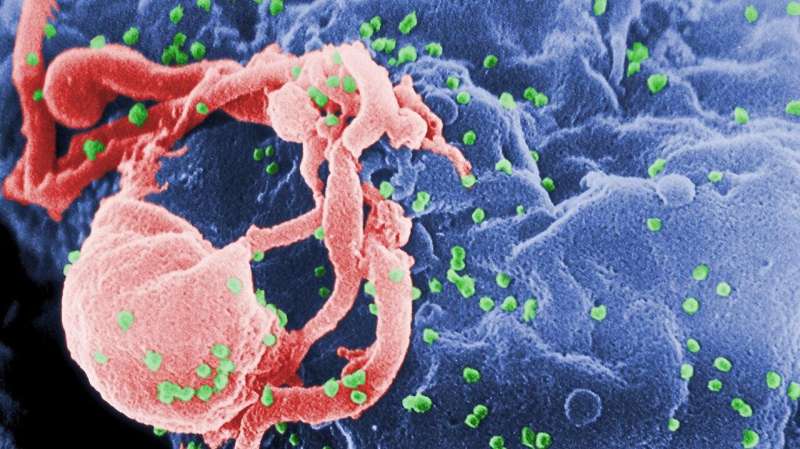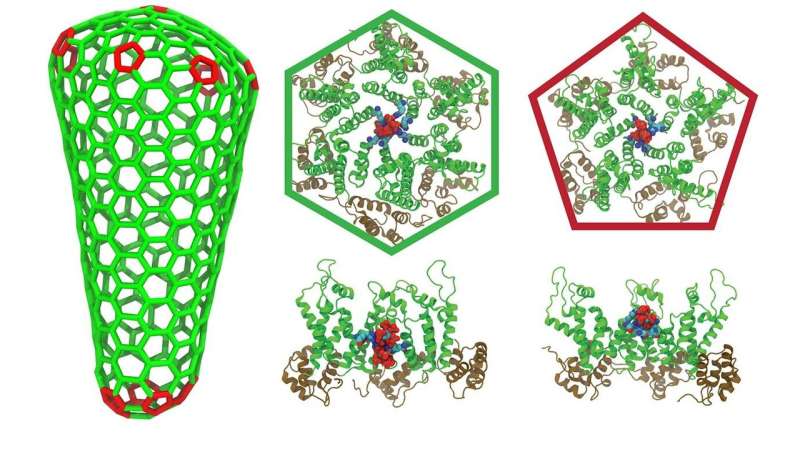Researchers discover how a small molecule is the key to HIV forming capsules

A group of University of Chicago scientists announced a groundbreaking study that explores the role of a small molecule, called IP6, in building the HIV-1 virus capsid.
The genetic information of the HIV virus is surrounded by a layer of proteins called a capsid, which works as the armor of the virus. Figuring out how this capsid is formed provides an important avenue to developing treatments, yet researchers have struggled for decades to recreate stable capsids in the laboratory.
"The HIV capsid has a very unique conical shape that needs to be closed to contain the viral genetic material," said postdoctoral fellow and lead author of the study Alvin Yu, which was published Sept. 16 in Science Advances.
Part of the secret to assembling the capsid is the incorporation of defects into the lattice. The majority of the capsid is composed of hexameric protein arrangements that consist of six subunits. However, there are twelve points on the capsid that are pentameric—consisting of five protein subunits.
"Without these pentamers, the HIV capsid protein would just assemble into long tubes open on two ends," explained Professor Gregory Voth, an expert in multiscale computer simulation studies of biomolecules.

Recent experiments had shown that once IP6 was added, the capsids would enclose and create the correct conical structure that would persist for hours rather than minutes. However, little was known about why and how this occurred or the specific molecular role of IP6.
To explore what was happening on a molecular level, the researchers used a highly specialized computer called Anton, specifically built for molecular dynamics simulations. This allowed the scientists to see how IP6 binds to the capsid, which is difficult to see experimentally.
The researchers analyzed the physical movements of the molecules over a period of time, giving a view of how the system changes. Their analysis showed that IP6 energetically prefers binding with pentamers to stabilize these conformations, even though there are far fewer of them than the hexamers. This is important because whatever interaction is energetically favorable and most stable is the most likely to happen, and to last.
"This study is the smoking gun that shows exactly why IP6 prefers to bind to pentamers and the mechanisms behind it," said Voth.
Understanding these mechanisms creates a deeper grasp of how small molecules can regulate protein assembly. When it comes to HIV, further understanding of how the virus builds its armor could open the door to new treatments. One of the binding spots of IP6 is already a known target of drug inhibitors.
"The stability of the capsid is essential to whether the virus can deliver its payload into host cells. Understanding how to modulate capsid stability, could lead to a new route for inhibitors to disrupt the virus," said Yu.
More information: Alvin Yu et al. Atomic-scale characterization of mature HIV-1 capsid stabilization by inositol hexakisphosphate (IP6), Science Advances (2020). DOI: 10.1126/sciadv.abc6465
Journal information: Science Advances
Provided by University of Chicago





















